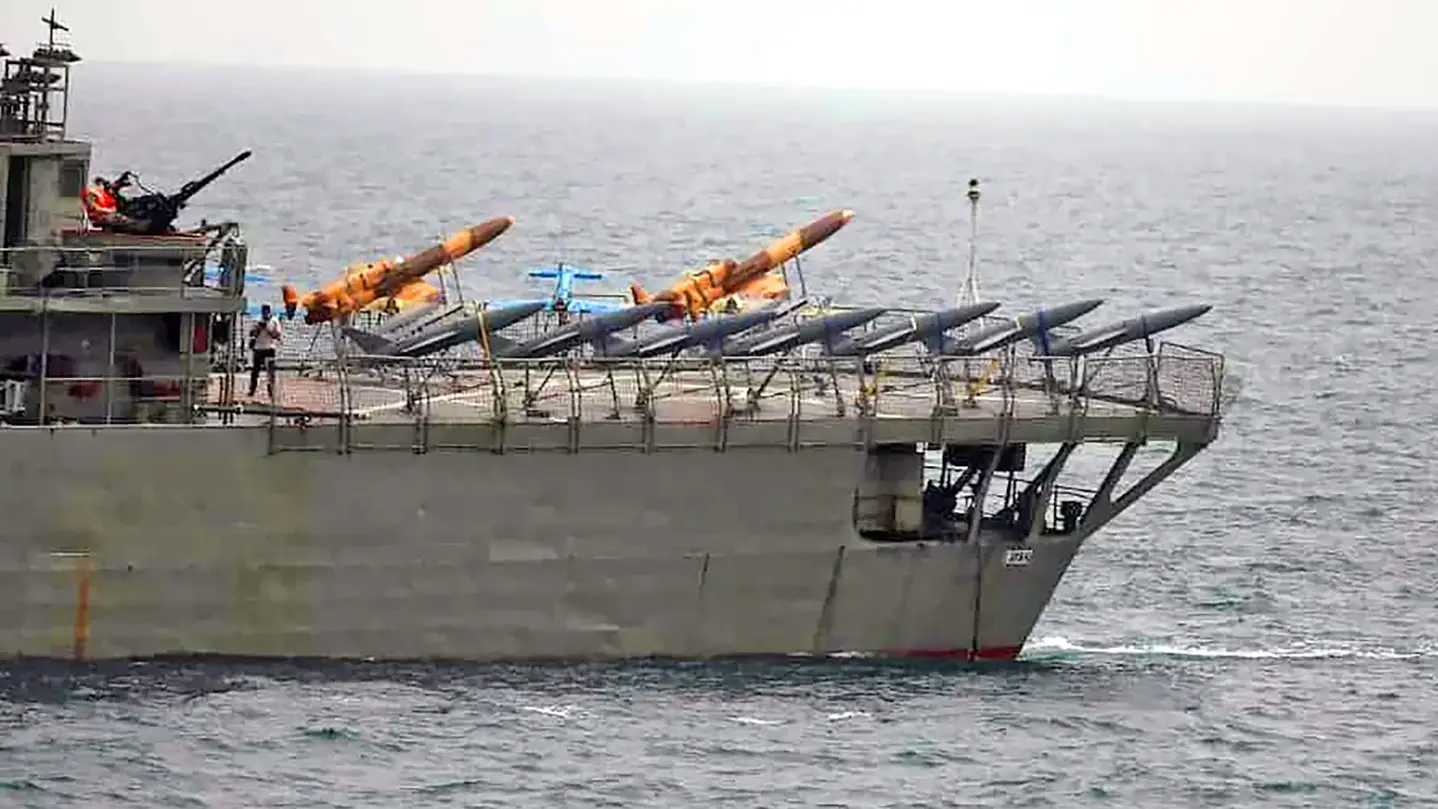Operation Prosperity Guardian, the American-led coalition to defend shipping through the Red Sea, the Bab el-Mandeb Strait, and the Gulf of Aden from Houthi attacks is showing major cracks just as it is forming. At the same time, the latest rash of drone strikes on commercial vessels appears to have spread far from Yemen’s shores, to waters off India.
A total of twenty countries have agreed to take part in the multi-national naval security coalition, according to the Pentagon earlier this week, and some of those participants don’t want to be named. One of the biggest issues is that of those 20, only a fraction will supply actual ships or other major assets to help the cause. In fact, many are just sending a handful of personnel. This is especially problematic now that Spain, Italy, and France have rejected the U.S. demand that their vessels fall under U.S. Navy command while deployed as part of the security operation.
According to Reuters, Spain is now stating they will only agree to a NATO or EU-led operation. Italy’s frigate Virginio Fasan would still deploy to the region, but it would not do so as part of Operation Prosperity Guardian. Meanwhile, France is still going to participate, but it will not allow its vessels to come under U.S. command. This is a big problem as these countries, all NATO members, have highly capable ships with robust air defense capabilities to send. Regardless of how many countries agree to take part, this highly resource-intensive enterprise will need warships, and capable ones at that.

While wrangling any multi-national coalition for a tumultuous operation like this is never easy, these developments among America’s closest allies are certainly setbacks. They also come as it appears that the threat to shipping is expanding far beyond the Bab el-Mandeb and its more immediate surroundings.
Just hours ago, a Liberian-flagged chemical tanker M/V Chem Pluto that has ties to Israel was struck by a drone while sailing in the Indian Ocean, roughly 120 miles to the southwest of the Indian port city of Veraval.

According to ABC News, Ambrey, a prolific security contractor that provides armed guards and other services to commercial vessels, said the drone stuck the stern of the ship and a fire was ignited, but was eventually put out without injuries to the ship’s crew. The ship has structural damage and has taken on some water as a result of the attack. It was heading from Saudi Arabia to India when it was struck. The Indian Navy responded to the ship’s distress call with a maritime patrol aircraft and a warship.

You can read all about Ambrey’s operations, and how private contractors operate aboard commercial vessels passing through the Bab el-Mandeb in our recent feature here.
Veraval is 1,200 miles from Yemen’s shore. This is much farther than any previous attack on shipping by the Houthis. It’s possible a new capability was put into play, but that would require satellite man-in-the-loop connectivity, which is more complex than anything we have seen them use in the past. Staging an attack from a nearby ship would be much easier, but that is also a more complex overall undertaking than what we have seen from them in the past, which have been extremely localized operations. While there is nothing definitive in terms of a ‘smoking gun’ at this point, this attack points more toward Iran. Iran and Israel have been fighting a low-key anti-shipping battle. It’s something we have reported on for years, and Iran uses one-way attack drones for these targeted operations.
These tit-for-tat strikes have occurred throughout the Middle East, including around the Gulf of Oman. Iran has an increasingly large flotilla of ships capable of, or specifically designed/adapted, to launch drones of increasingly complexity, especially long-range one-way attack types. Shahed-136 derivatives that have man-in-the-loop capabilities that allow them to hit moving targets have been used in these strikes, among other types. Still, those attacks require a controller within line-of-sight of the drone, which would be on the coast if the target isn’t too far out to see, or, in cases like this, a ship in the same general area as the target. Other potential concepts of operations exist to pull something like this off, but these are some key issues to consider based on established and widely-employed capabilities.

Drawing a clear line between the Houthis and their benefactors, Iran, is impossible. If this was indeed an Iranian launched operation, the context of these sporadic strikes on Israeli-related shipping cannot be viewed in the context as in the past, prior to the Houthis launching their anti-shipping campaign to avenge the Palestinians.
White House national security spokeswoman Adrienne Watson stated the following yesterday, according to CBS News: “We know that Iran was deeply involved in planning the operations against commercial vessels in the Red Sea. This is consistent with Iran’s long-term materiel support and encouragement of the Houthis’ destabilizing actions in the region.”
If Iran plans on jumping more directly into these types of operations and using their flotilla built seemingly for this exact application, it would be seen like a major escalation. It would also make providing security for naval traffic all that much harder. The northern end of the Indian Ocean is a vast place. This is especially true considering that the U.S. military and its rickety coalition cannot do this yet even in the relatively tight confines of the Bab el-Mandeb and its approaches.
This is all conjecture at this point and there are other, although far less likely, potential explanations. Still, it could very well be that Operation Prosperity Guardian may have even more on its hands than it already is struggling to deal with.
Contact the author: Tyler@thedrive.com

